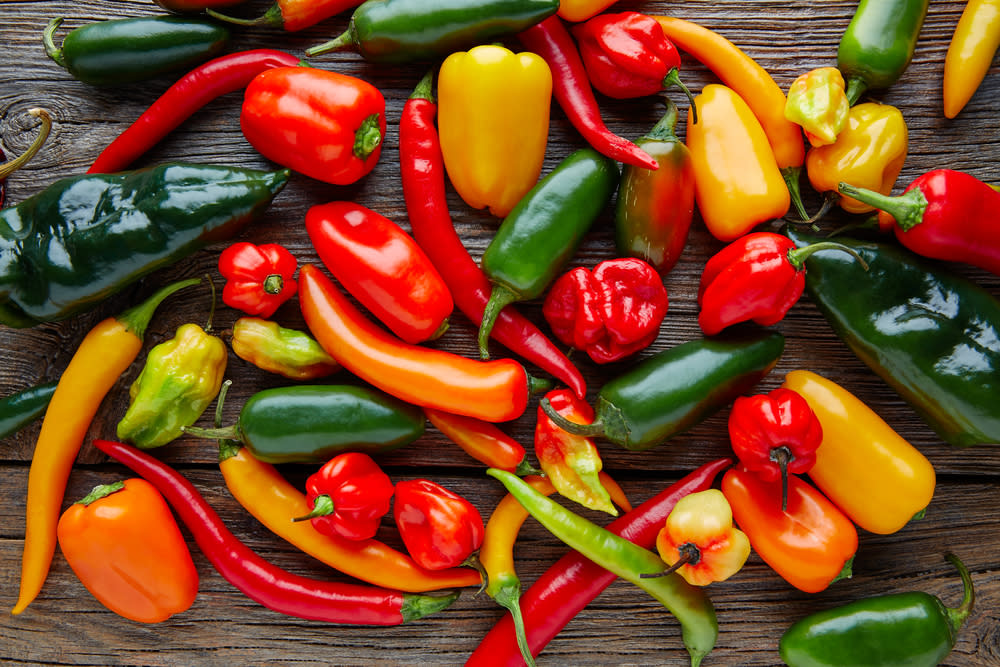Eating these foods could actually help if you’re stuck in hayfever hell
Itchy eyes, incessant sneezing, and a runny nose driving you crazy? That’s because hayfever season is upon us. Aside from loading up on allergy meds or, in probably a wiser move, seeing your doctor and getting a prescription, there are some other things you can do to curb your allergy symptoms. As in, eat certain foods.
First, no food is a proven cure for allergies. But these items are full of nutrients that are good for your whole body. And they may also lessen the symptoms of seasonal allergies. We consider that a win-win.
1. Green tea
A post shared by Sarah
(@dsquadmom) on Mar 25, 2017 at 10:47am PDT
Tea contains natural antihistamines, which help to reduce symptoms of hayfever. Histamine is a chemical that your body releases during allergic reactions. Dr. Murray Grossan, MD, told Everyday Health that he especially recommends starting the morning with a cup of hot tea to help prevent morning sneezing.
2. Fatty fish
A post shared by Lisa ✨✨ (@paleoworkingmama) on Mar 25, 2017 at 10:53am PDT
DHA and EPA are two types of healthy omega-3 fatty acids that have been known to ease allergy symptoms. They’re found in fatty fish like mackerel, salmon, sardines, trout, tuna, bluefish, and herring. Not that we need another reason to eat more sushi, but we’ll take it.
3. Tree nuts with omega-3
A post shared by Anna ↟ (@picking.daisies_) on Mar 25, 2017 at 11:16am PDT
Some tree nuts, like walnuts and flaxseeds, also contain omega-3 fatty acids. Walnuts contain a plant-based, omega-3 fatty acid called alpha-linolenic acid, or ALA. ALA is an essential fatty acid, meaning that your body cannot synthesize it, so it must be consumed in the diet. Men need to consume 1.6 grams of ALA per day and women need 1.1 grams per day, according to the Institute of Medicine. A 1/4 cup serving of walnuts provides 2.5 grams of ALA, which is more than 100 percent of the amount you need in a day.
4. Peppers and onions
A post shared by C H A R L E S W E B B (@chefcharleswebb) on Mar 25, 2017 at 11:35am PDT
Adding more of these veggies to your diet will increase your intake of quercetin — a natural plant chemical that can help reduce histamine reactions.
5. Fruits and berries
A post shared by J o s e (@naturally.jo) on Mar 24, 2017 at 6:12pm PDT
Vitamin C plays a part in controlling allergy symptoms. Try upping your C intake with citrus fruits and berries, especially strawberries. It’s also in broccoli and a variety of other plant-based foods.
6. Yogurt
A post shared by @cutesimplestuff on Mar 25, 2017 at 11:25am PDT
Having “good” bacteria or probiotics in your intestines might help allergy symptoms such as a runny nose and congestion. Yogurt is a good natural source of probiotics. Whether eaten alone, or in a yummy berry and flax seed smoothie (tripling up on your allergy-fighting foods!), make sure you buy a brand that has live cultures in it.
Eating certain foods for allergies will obviously not cure severe cases. For that, of course, you should see a doctor. However, priming and prepping your body to have the best defense system possible could help. Lowering your susceptibility to the hayfever demons? We’ll take it!


